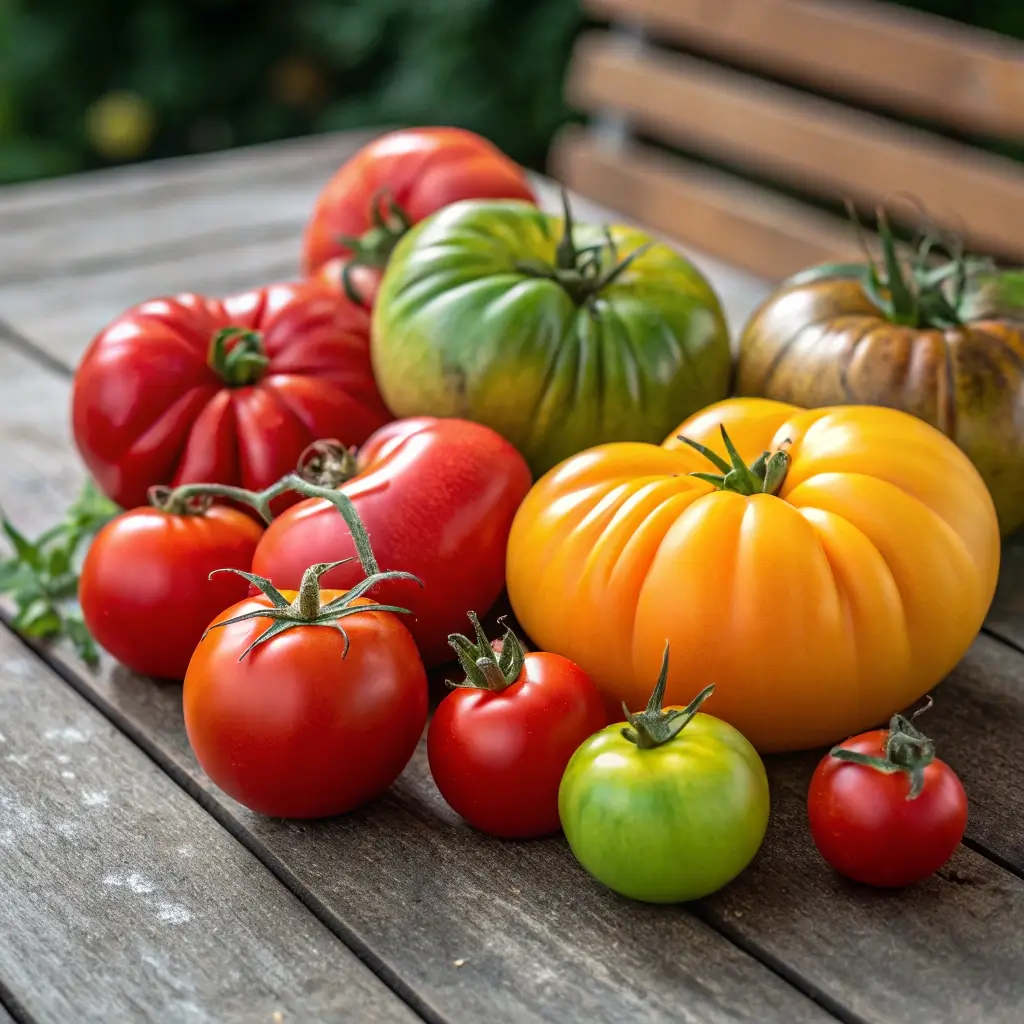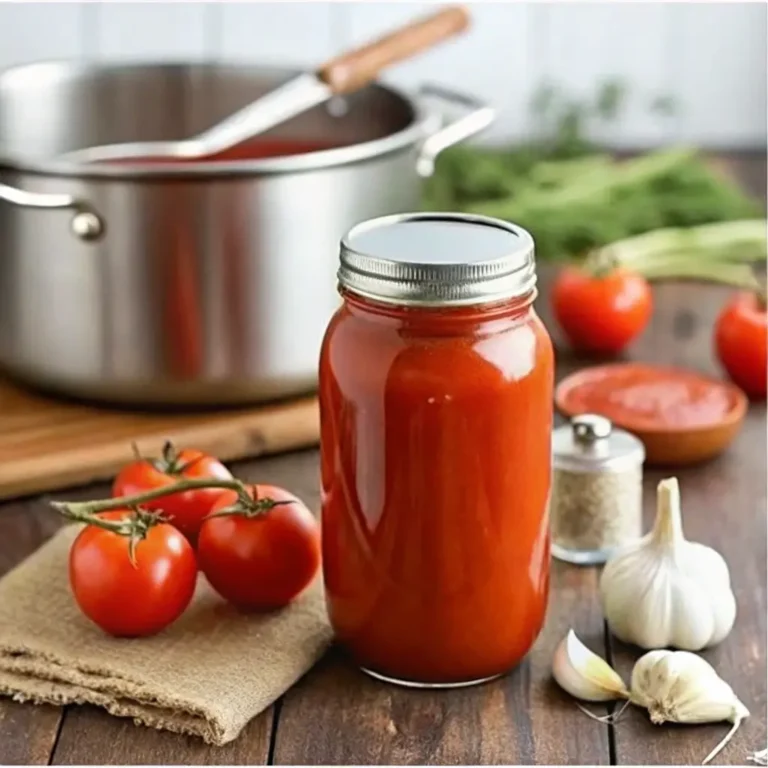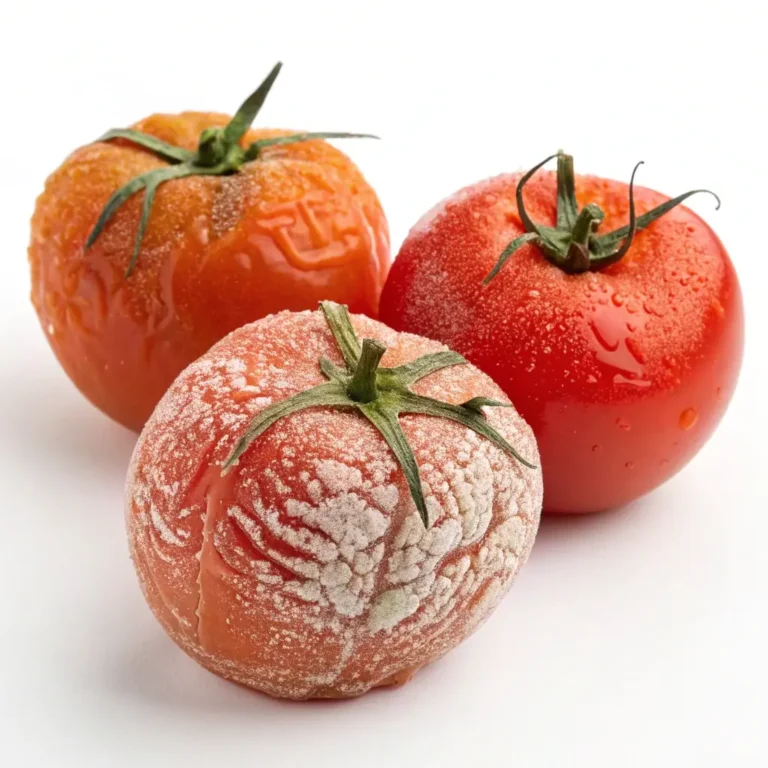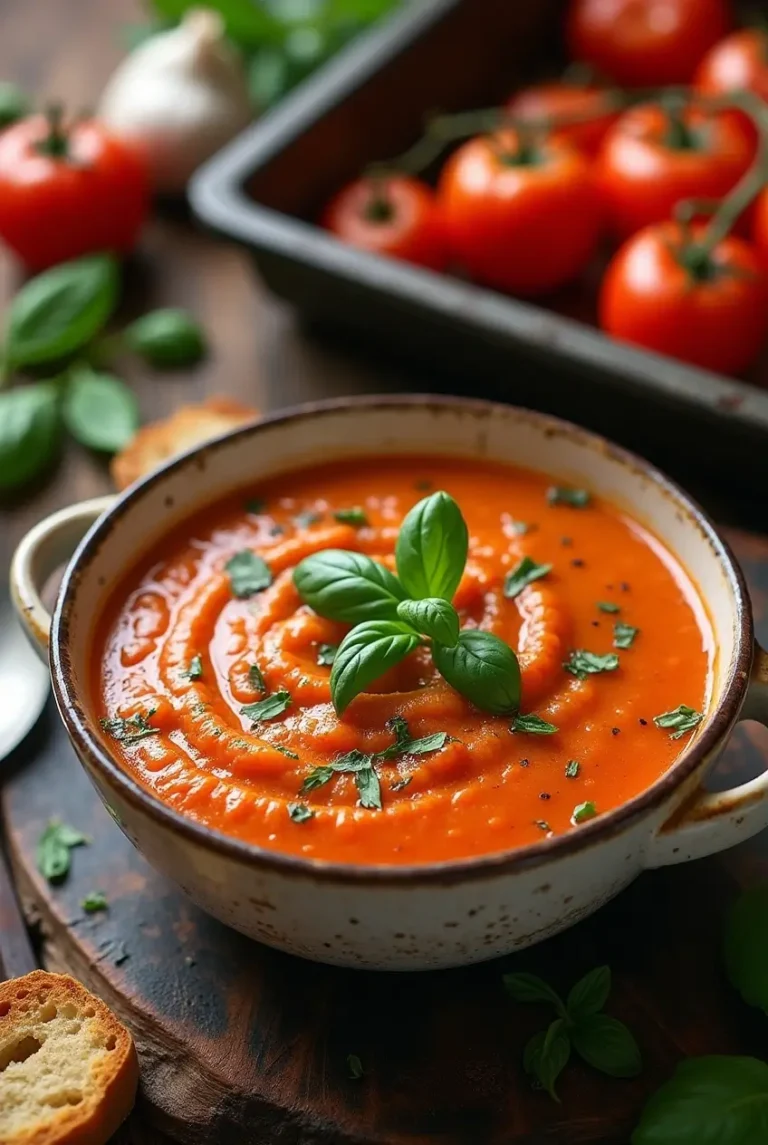5 Reasons to Love Heirloom Tomatoes: History, Selection, Uses & More
Table of Contents
Introduction
Did you know that while commercially grown tomatoes typically contain only 30 genetic variations, heirloom tomatoes boast over 3,000 unique varieties worldwide? This staggering difference isn’t just a botanical curiosity—it represents a rich tapestry of flavors, colors, and textures that make heirloom tomatoes truly exceptional. If you’ve ever wondered why chefs and home cooks alike are passionate about these distinctive fruits, you’re about to discover the fascinating world of heirloom tomatoes: history, selection, uses, and more. These living artifacts of our agricultural heritage offer so much more than their perfect supermarket counterparts, carrying stories of generations past through their seeds and distinctive characteristics.
What Are Heirloom Tomatoes?
Heirloom tomatoes are open-pollinated varieties that have been cultivated for at least 50 years, passed down through generations of families or communities. Unlike hybrid tomatoes, which are bred for uniformity, disease resistance, and shipping durability, heirlooms are prized for their exceptional flavor profiles, unique appearances, and cultural significance. These tomatoes represent our agricultural heritage, with some varieties dating back more than 300 years!
Key Characteristics:
- Non-GMO and open-pollinated
- Seeds can be saved and will produce the same variety year after year
- Cultivated for flavor rather than commercial attributes
- Diverse range of colors, shapes, sizes, and tastes
- Often feature distinctive ribbing, coloration patterns, and irregular shapes
5 Compelling Reasons to Love Heirloom Tomatoes
1. Unmatched Flavor Diversity
The flavor complexity of heirloom tomatoes is their crowning glory. While commercial varieties focus on one-dimensional sweetness or acidity, heirlooms offer nuanced taste profiles ranging from wine-like richness (Black Krim) to tropical fruit notes (Pineapple) to candy-like sweetness (Sun Gold). Research has identified over 400 volatile compounds that contribute to tomato flavor, and heirlooms typically contain significantly higher concentrations of these flavor-enhancing substances compared to conventional varieties.
2. Nutritional Superiority
Studies from the University of California have found that many heirloom varieties contain up to 40% more calcium, vitamins, and antioxidants than their commercial counterparts. The vibrant pigmentation of varieties like Purple Cherokee and Green Zebra indicates the presence of different beneficial phytonutrients, each offering unique health benefits. The diverse nutrient profiles among different varieties mean that incorporating various heirlooms into your diet provides a broader spectrum of nutritional compounds.
3. Preservation of Biodiversity
By cultivating and consuming heirloom tomatoes, you’re participating in conserving agricultural biodiversity. According to the FAO, we’ve lost approximately 75% of plant genetic diversity in the past century. Each heirloom variety contains unique genetic traits that may prove valuable for future food security, disease resistance, or climate adaptation. Supporting heirloom cultivation helps maintain these irreplaceable genetic resources.
4. Connection to Culinary Heritage
Heirloom tomatoes offer a taste of history. The Brandywine variety, with its perfect balance of sweetness and acidity, has been grown since the 1800s. The Russian Black Krim tells the story of cultural exchange and migration patterns. Each variety has a fascinating origin story that connects us to our collective culinary heritage and the generations of gardeners who carefully selected for qualities they valued most.
5. Sustainable Growing Practices
Heirloom varieties are often better adapted to local growing conditions and require fewer inputs than commercial varieties. Their genetic diversity makes them naturally more resilient against localized pests and diseases. According to sustainable agriculture research, gardens with greater varietal diversity typically experience less crop loss and require fewer interventions, making heirlooms an excellent choice for environmentally conscious gardeners.
How to Select the Perfect Heirloom Tomatoes
When choosing heirloom tomatoes, embrace their imperfections! Unlike commercial varieties, the best-tasting heirlooms often have irregular shapes, slight cracks, or unusual coloration. Here’s what to look for:
- Weight: Choose tomatoes that feel heavy for their size, indicating juiciness.
- Aroma: The stem end should have a rich, sweet, earthy smell.
- Firmness: Gentle pressure should yield slightly without feeling soft.
- Skin: Look for taut skin with a slight shine; avoid wrinkled tomatoes.
- Color: Seek vibrant, deep colors appropriate for the variety.
Creative Culinary Uses
Heirloom tomatoes shine brightest when their natural flavors can take center stage:
- Raw Preparations: Simple caprese salads, bruschetta, or gazpacho showcase their fresh flavor profiles.
- Light Cooking: Quick roasting concentrates flavors while preserving distinctive characteristics.
- Variety-Specific Uses: Match varieties to appropriate uses—sweet Yellow Pear tomatoes excel in salads, while meaty Romas are perfect for sauces.
- Color-Based Presentations: Create stunning monochromatic or rainbow displays using different varieties.
- Preservation: Can, dehydrate, or freeze these seasonal treasures to enjoy year-round.
Storing and Maximizing Freshness
To preserve the exceptional flavor of heirloom tomatoes:
- Store at room temperature, never refrigerate (temperatures below 55°F destroy flavor compounds)
- Place stem-side down on a flat surface, not touching each other
- Use within 3-5 days of purchase for optimal flavor
- For slightly underripe specimens, place in paper bags with an apple to accelerate ripening
Conclusion
Heirloom tomatoes offer an extraordinary window into our agricultural past while providing unmatched culinary experiences today. Their remarkable diversity in flavor, appearance, and nutritional content makes them true agricultural treasures worthy of celebration. Beyond their immediate culinary benefits, supporting the cultivation and consumption of heirloom varieties contributes to preserving biodiversity and cultural heritage. The next time you encounter these colorful, irregularly-shaped fruits at your farmers’ market or grocery store, remember you’re not just selecting produce—you’re connecting with a rich historical tradition and supporting a more diverse, resilient food system.
FAQs
Are heirloom tomatoes more difficult to grow than regular tomatoes?
While some heirlooms lack the disease resistance of modern hybrids, many varieties have adapted to specific growing conditions over generations. Success often depends on matching the variety to your climate and providing appropriate care.
Why are heirloom tomatoes typically more expensive?
Their higher price reflects several factors: lower yields compared to commercial varieties, more labor-intensive growing practices, shorter shelf-life requiring careful handling, and the premium value of their superior flavor and uniqueness.
Can I save seeds from heirloom tomatoes to grow next year?
Absolutely! Unlike hybrid varieties, heirloom seeds will produce plants identical to the parent. Simply scoop out seeds, ferment for 2-3 days in water, rinse, dry thoroughly, and store in a cool, dry place.
What’s the difference between an heirloom tomato and an organic tomato?
“Heirloom” refers to the variety and its genetic heritage, while “organic” refers to growing methods. An heirloom tomato may or may not be grown organically, and an organic tomato may be either an heirloom or commercial hybrid variety.
How can I tell if a tomato is truly an heirloom variety?
The most reliable way is to purchase from reputable sources like specialty farmers’ markets, seed companies known for heritage varieties, or certified growers. True heirlooms will have variety names (like Brandywine or Cherokee Purple) rather than generic descriptions.







